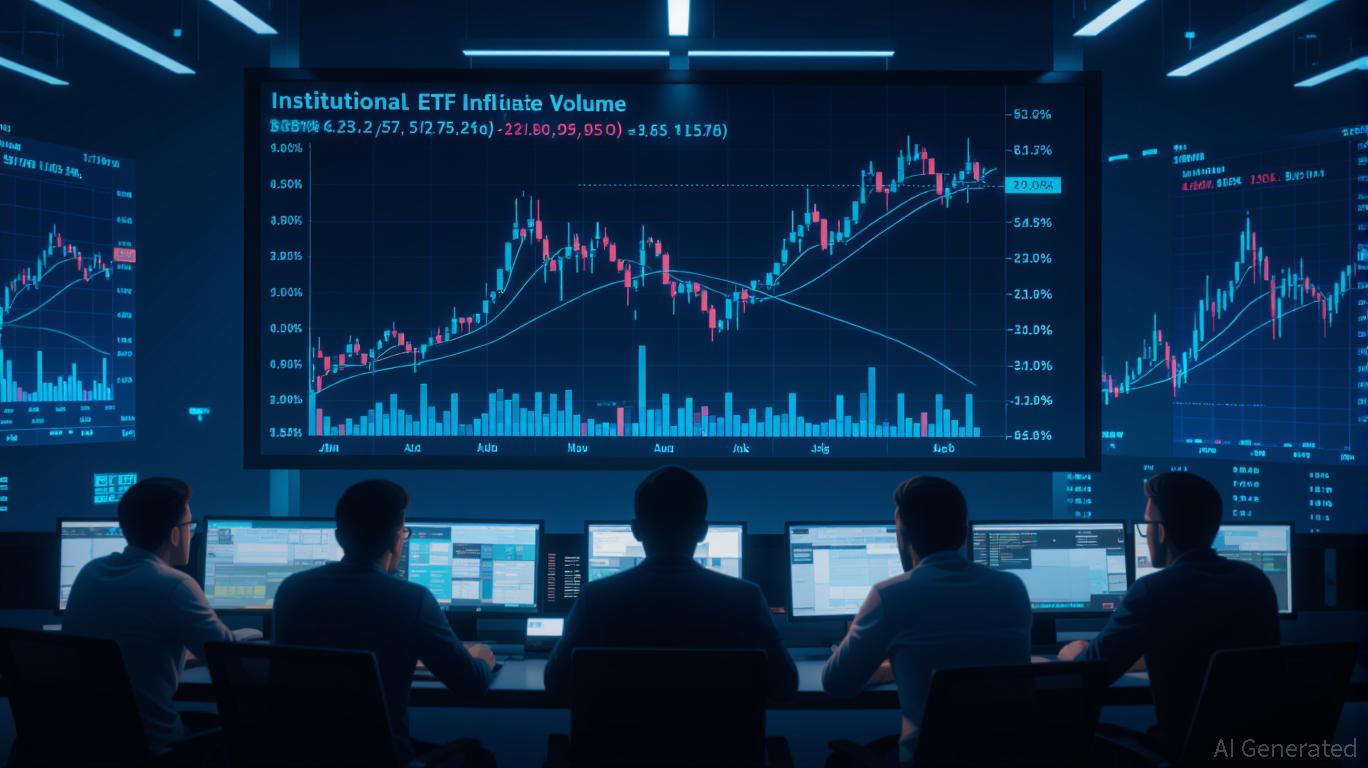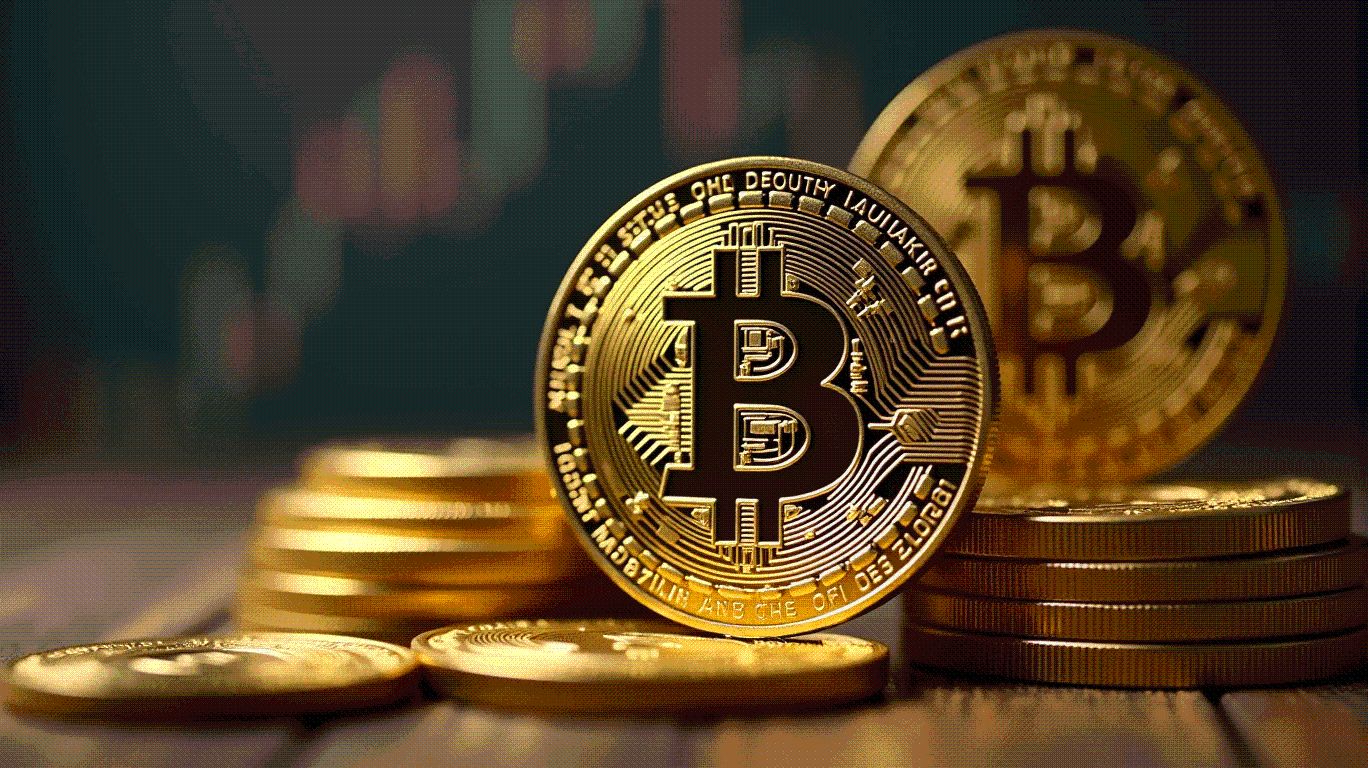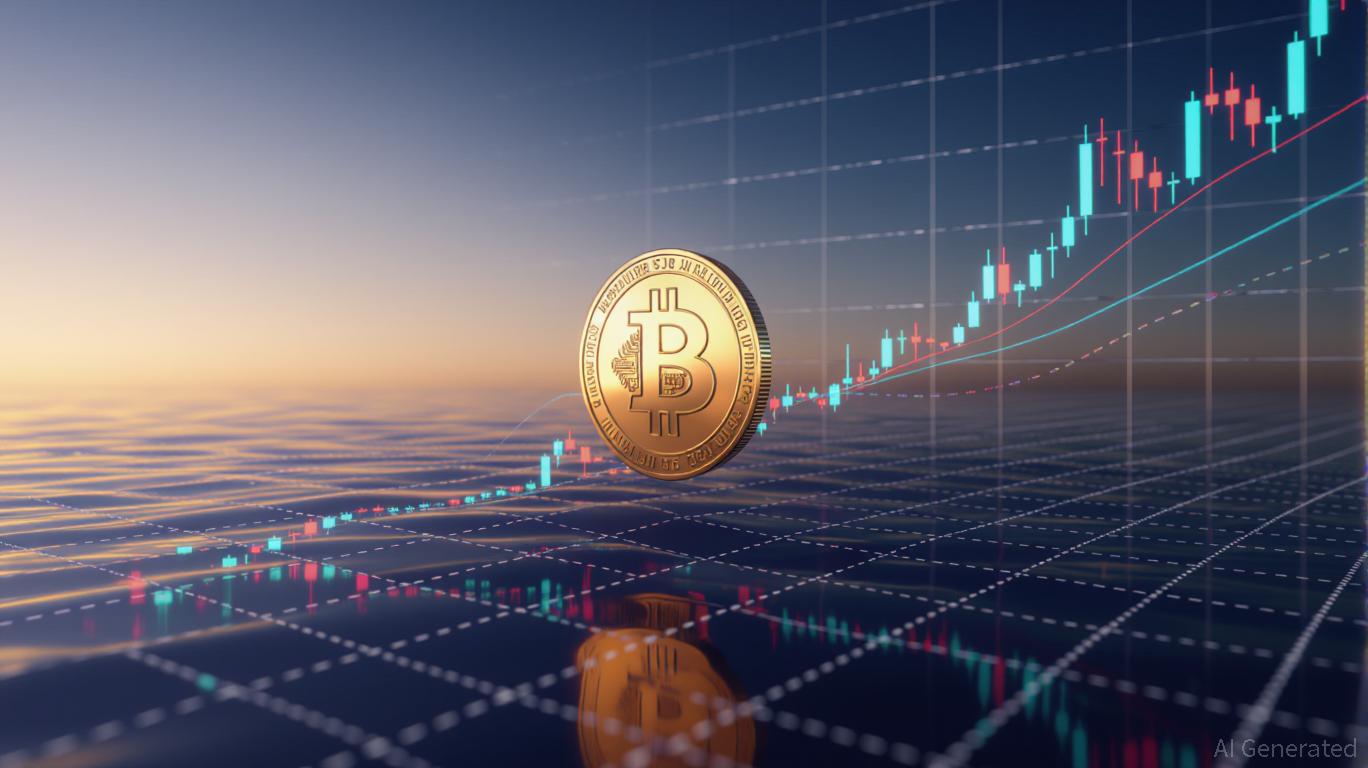News
Stay up to date on the latest crypto trends with our expert, in-depth coverage.

- IOTA launches first native token liquidity pool in 2025, addressing DeFi liquidity gaps and aligning with institutional capital demands. - Native pool enables direct on-chain price discovery for IOTA assets, offering yield opportunities but exposing users to impermanent loss and smart contract risks. - Partnership with Lukka integrates real-time compliance tools, aligning IOTA with EU MiCa regulations and reducing institutional entry barriers. - Launch coincides with $123.6B DeFi TVL growth in Q2 2025, p

- Bitcoin faces technical bearish signals (RSI, MACD, MVRV) suggesting $95K–$100K correction risks amid price consolidation near $108K. - Institutional bullishness grows: $132.5B ETF inflows, corporate treasuries (MicroStrategy: $73.96B BTC), and U.S. Strategic Bitcoin Reserve purchases reinforce Bitcoin's reserve asset status. - 2025 halving (block reward cut 50%) and sustained ETF demand create 40:1 supply-demand imbalance, with 70% of supply held by long-term holders. - Contrarian investors target $114K

- XRP Ledger (XRPL) gains institutional traction via protocol upgrades and SEC's 2025 non-security ruling, aligning with Bitcoin/Ethereum under CLARITY Act. - Strategic fixes like AMM stabilization, NFT security, and payment channel optimizations enhance resilience, critical for institutional-grade infrastructure. - Ripple's ODL processed $1.3T in Q2 2025, leveraging XRP for instant cross-border settlements, while 20,000+ AMM pools support tokenized assets and stablecoins. - 2025 roadmap includes EVM sidec

- Japanese firm Gumi invests ¥2.5B in XRP to build cross-border payment infrastructure, prioritizing utility over speculation. - Partnership with SBI Holdings accelerates Ripple's RLUSD stablecoin rollout, leveraging XRP's liquidity for regulated financial solutions. - XRP's consensus protocol enables fast, scalable transactions, positioning it as a preferred infrastructure asset for institutional portfolios. - Gumi's quarterly crypto evaluations highlight disciplined integration strategies, reinforcing XR

- Dogecoin's $200M Treasury, led by Elon Musk's lawyer Alex Spiro and House of Doge, aims to institutionalize DOGE as a legitimate asset class via stock-market exposure. - Unlike Bitcoin's scarcity-driven value, DOGE's infinite supply and lack of smart contract functionality tie its price to social media sentiment and speculative trading. - Technical analysis shows structural vulnerabilities (e.g., bearish patterns, dilution risks) and mixed short-term trading signals, with analysts projecting $0.29–$0.80

- CTSI’s reported 214.38% 24-hour drop is mathematically impossible, likely due to a decimal error or reporting flaw. - Analysts caution verifying data sources, as the 7-day and 1-month gains contrast with the implausible 24-hour decline. - The 1-year decline remains one of the asset’s most severe, raising questions about liquidity and transparency during sharp swings. - Backtesting historical patterns could clarify if such drops precede rebounds or further declines.

- U.S. court rules Trump’s tariffs via IEEPA unconstitutional, challenging executive power scope. - Tariffs remain until mid-October; Supreme Court appeal could invalidate them retroactively. - Ruling complicates trade negotiations, raises uncertainty for businesses and global trade stability. - Steel/aluminum tariffs unaffected; Congress may reform laws to clarify executive authority limits. - USTR reaffirms trade goals but outcome will shape future negotiations and legal frameworks.

- Ondo Finance partners with Ripple to launch tokenized U.S. Treasuries on XRP Ledger, attracting $30M TVL. - RWA market grows 300% YoY with tokenized treasuries leading, while Ondo sets tokenization standards via Global Markets Alliance. - ONDO token trades at $0.9129 with $1.27B market cap, showing 42.48% annual gains despite 33.14% YTD volatility. - JPMorgan collaboration on Base blockchain tests tokenized deposits, advancing blockchain integration in traditional finance. - Ondo's strategic alliances an

- El Salvador splits Bitcoin reserves across 14 wallets to mitigate quantum risks, limiting exposure to single breaches. - NIST endorses quantum-resistant algorithms (CRYSTALS-Kyber, SPHINCS+) as institutions adopt hybrid cryptographic systems for crypto-agility. - Institutional investors must prioritize fragmentation, transparency, and proactive governance to align with EU's 2030 PQC mandates and Bitcoin's decentralized security needs. - Quantum risk mitigation requires immediate action as 2025-2035 trans

- XRP's 2020-2025 price swings reflect behavioral biases, amplified by SEC lawsuits and regulatory uncertainty. - 2025 SEC settlement triggered 20% price rebound as investors shifted from panic selling to profit-taking. - Whale activity and herd mentality exacerbated volatility, with large holders driving both bullish and bearish trends. - Investors using reflection effect insights can time entries/exists by tracking regulatory catalysts and whale movements.
- 03:05Polymarket and Kalshi Dominate the Prediction Market, Newcomers Struggle to SurviveOn October 26, according to Dune data, the prediction market is dominated by two major players: Polymarket and Kalshi, while newer entrants are struggling to find their place in the ecosystem. Over the past week, Polymarket led the prediction market with a nominal trading volume of $1.062 billion, followed by Kalshi with $950 million. Limitless and Myriad recorded $21.93 million and $3.85 million, respectively. In terms of number of trades, Kalshi ranked first with 3.575 million trades, Polymarket reached 2.586 million trades, while Limitless and Myriad had 378,000 and 66,000 trades, respectively.
- 03:04RootData: ENA will unlock tokens worth approximately $51.21 million in one weekAccording to ChainCatcher, citing token unlock data from the Web3 asset data platform RootData, Ethena (ENA) will unlock approximately 110.95 million tokens at 00:00 on November 2 (UTC+8), with a total value of about $51.21 million.
- 03:00Vitalik: If validator sets act maliciously, users may have no recourseChainCatcher news, Ethereum co-founder Vitalik Buterin posted on X to remind that a key feature of blockchain is that even if a 51% attack occurs, invalid blocks cannot be made valid. This means that even if 51% of validators collude (or encounter software bugs), they cannot steal users' assets. However, if you trust the validator set to do other things that the blockchain may not be able to control, then 51% of validators could collude and provide incorrect answers, and users would have no recourse.